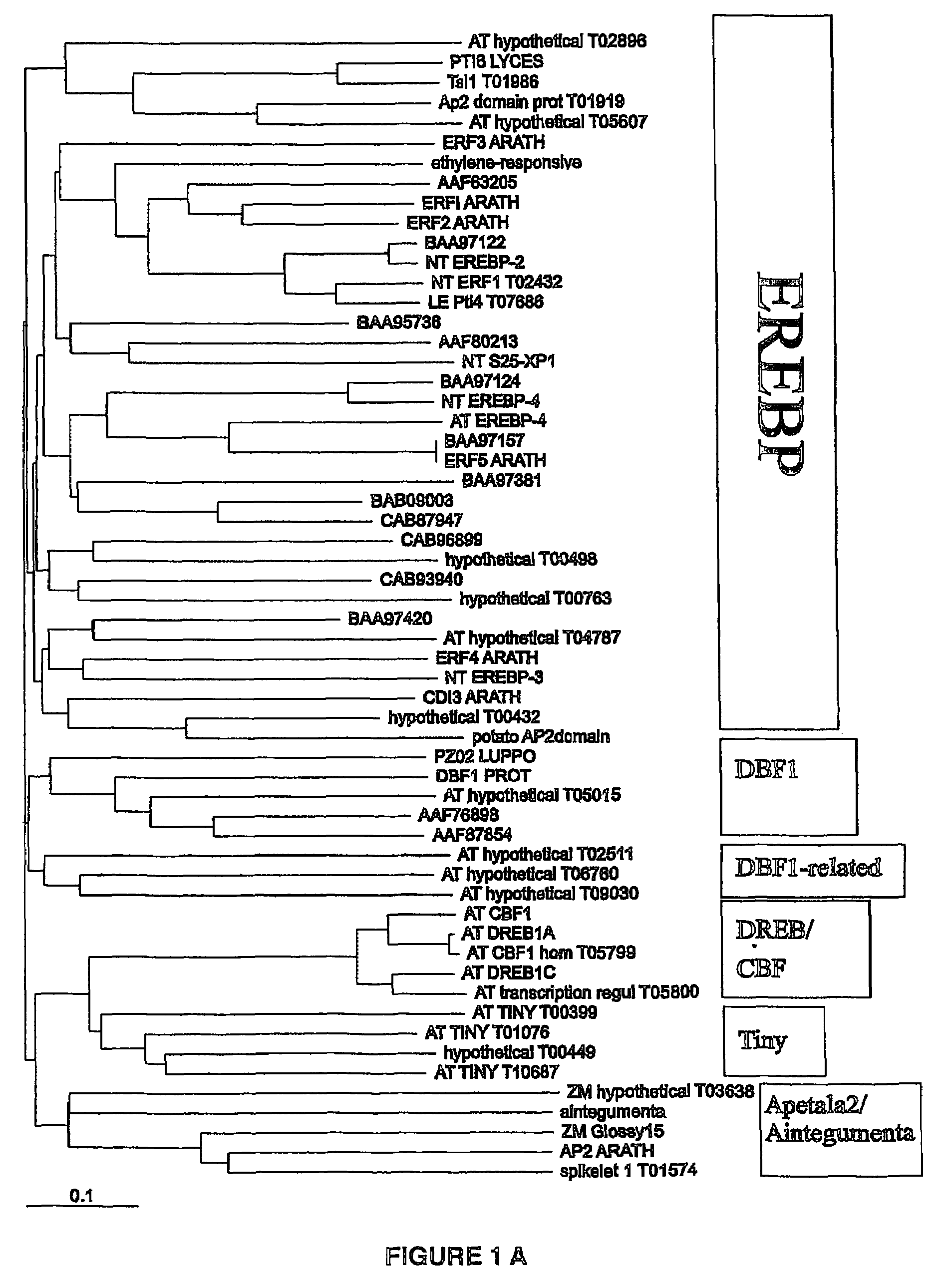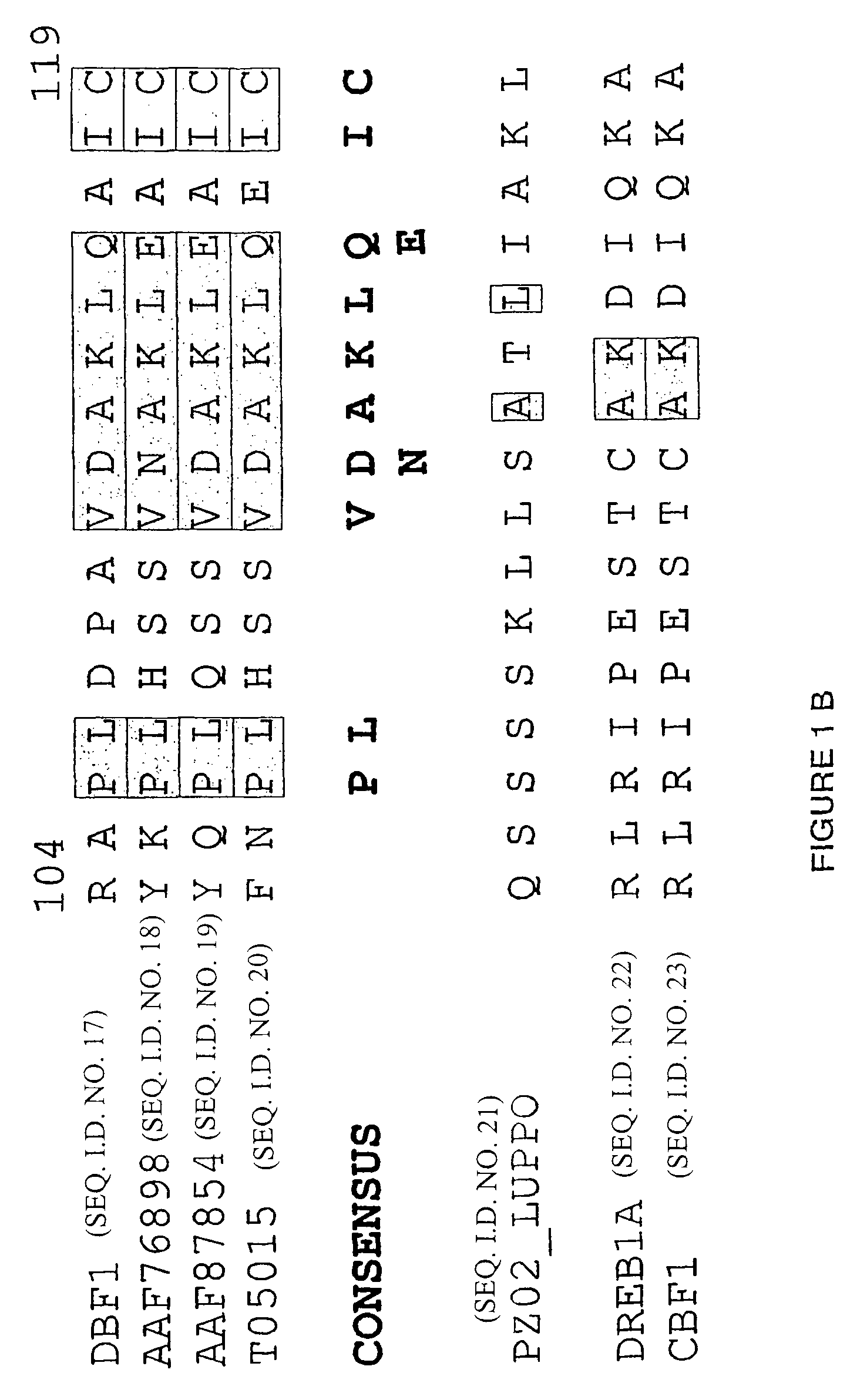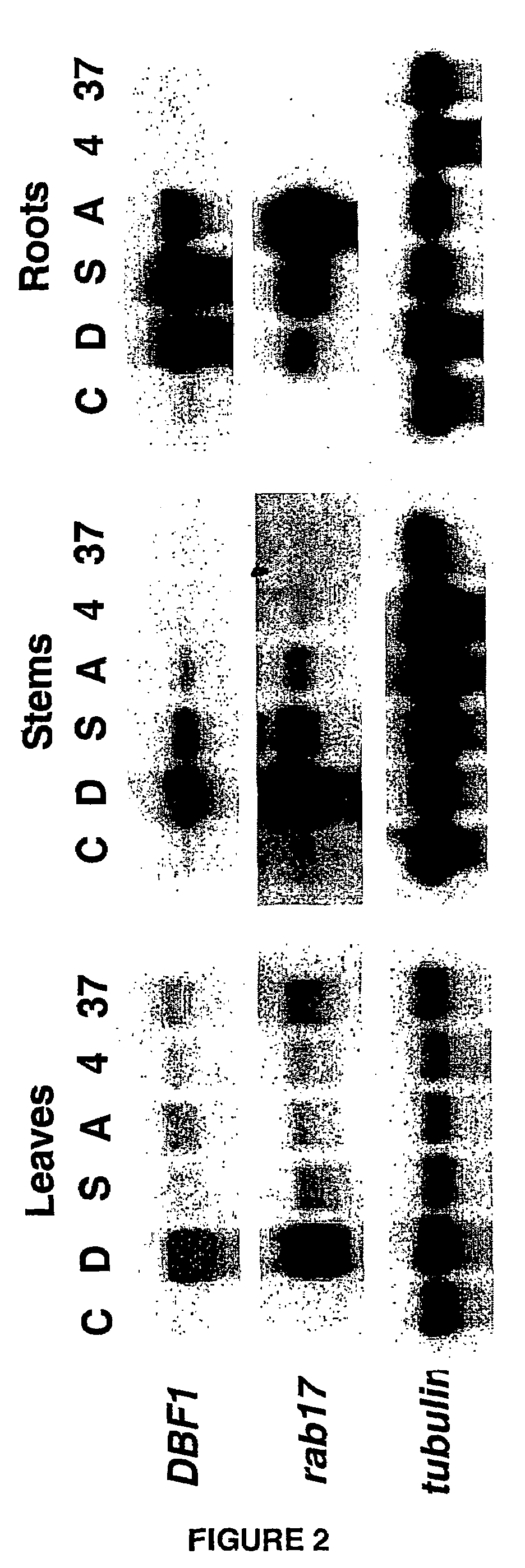Method for improving plant tolerance to environmental stress
a technology of environmental stress and plant tolerance, applied in the direction of plant/algae/fungi/lichens, peptides, peptides, etc., can solve the problems of high complexity of tolerance to environmental stress, heavy criticism of intensified use of agrochemicals,
- Summary
- Abstract
- Description
- Claims
- Application Information
AI Technical Summary
Benefits of technology
Problems solved by technology
Method used
Image
Examples
example 1
Isolation of cDNAs Encoding DRE2 Binding Proteins Using the Yeast One-hybrid Screen
[0296]The yeast one-hybrid screening system (Clontech®) was used in order to isolate cDNA clones that encode DNA binding proteins that interact with the DRE2 cis-element of the rab17 promoter. To this aim, a dual reporter yeast strain was generated. A synthetic oligonucleotide containing three tandem repeats of the cis-element DRE2 from the rab17 promoter (Busk et al., Plant J. 11:1285-1295, 1997) with EcoRI and XbaI or EcoRI and SaII restriction sites at its 5′ and 3′ ends was cloned in the corresponding restriction enzyme sites in the multilinkers of the pHISi-1 and pLacZi plasmids respectively. The double reporter yeast strain was obtained by transforming the yeast strain YM4271 with the above placZi and pHISi-1 plasmid constructs sequentially. The yeast transformants were subjected to β-galactosidase and 3-AT control tests for determination of the background expression activity. The yeast transfor...
example 2
Nucleotide and Amino Acid Sequence of a DRE2 Binding Protein According to the Invention
[0298]DBF1 is an example of cDNA that encodes a protein which binds to the DRE2 cis element. The nucleotide and amino acid sequence of DBF1 are given as SEQ ID NO 2 and SEQ ID NO 3, respectively. The DBF1 cDNA contains an open reading frame of 222 amino acids and encodes a putative protein with a theoretical molecular mass of 24 kD.
example 3
Database Blast Analysis with the DBF1 Amino Acid Sequence
[0299]The DBF1 amino acid sequence was blasted against the nr (All non-redundant GenBank CDS translations+PDB+SwissProt+PIR) (using BLASTP program) and GPT_DNA (Rijksunoversiteit Gent—Vlaams Interuniverisair Instituut voor biotechnologie, K. L. Ledegenkstraat 35, B-9000 Gent; (using TBLASTN program) databases. Results from both blast searches showed essentially the same picture, namely:[0300]1. DBF1 shows the highest similarity to a class of AP2 domain-containing proteins of unknown function. E values of DBF1 with this class of proteins range between e−39 and e−46. Examples are the proteins encoded by the sequences with accession numbers AC009243, AC024228, AC021666, AC006228, AC012680, AL161595, AC007168 and AB013395.[0301]2. DBF1 shows high similarity to a class of AP2 domain-containing proteins of unknown function. E values of DBF1 with this class of proteins range between e−27 and e−29. Examples are the proteins with acces...
PUM
| Property | Measurement | Unit |
|---|---|---|
| temperature | aaaaa | aaaaa |
| volume | aaaaa | aaaaa |
| pH | aaaaa | aaaaa |
Abstract
Description
Claims
Application Information
 Login to View More
Login to View More - R&D
- Intellectual Property
- Life Sciences
- Materials
- Tech Scout
- Unparalleled Data Quality
- Higher Quality Content
- 60% Fewer Hallucinations
Browse by: Latest US Patents, China's latest patents, Technical Efficacy Thesaurus, Application Domain, Technology Topic, Popular Technical Reports.
© 2025 PatSnap. All rights reserved.Legal|Privacy policy|Modern Slavery Act Transparency Statement|Sitemap|About US| Contact US: help@patsnap.com



